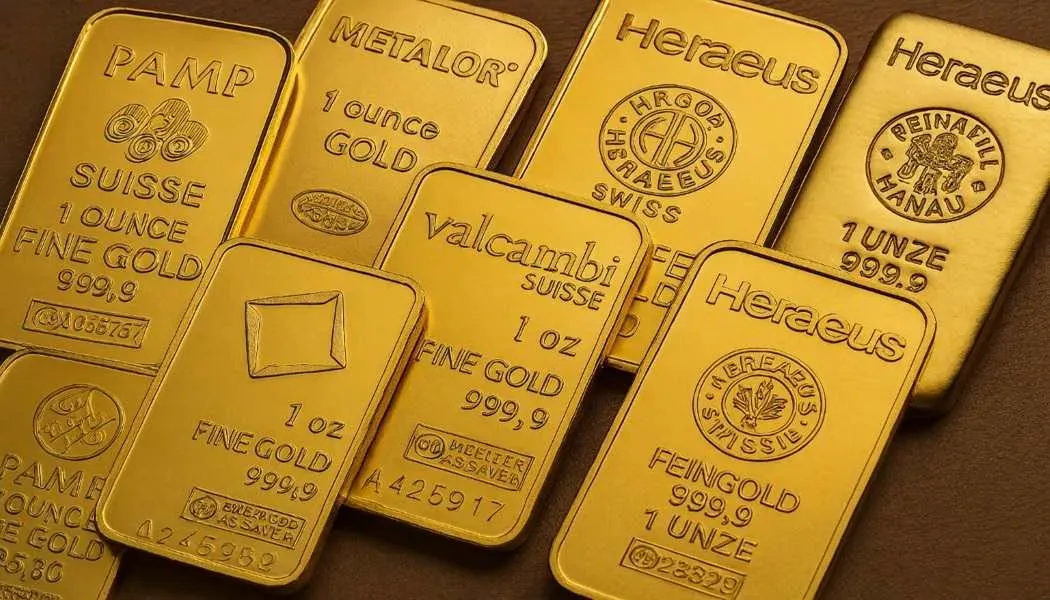
A Changing Gold Landscape: What U.S. Buyers Need to Know
As global trade tensions rise, U.S. gold buyers are facing a major shift in the precious metals landscape. New tariffs on minted gold bars imported from private refiners are poised to alter pricing, inventory, and buying behavior across the country. For those looking to protect or grow their portfolios, staying informed—and comparing prices—is more critical than ever.
At Bullion Hunters, we're tracking these changes closely to help you navigate the evolving market and make the smartest purchasing decisions.
Understanding the New Tariff on Minted Gold Bars
In a significant policy shift, the U.S. has introduced a 10% import tariff on minted gold bars produced by private international refiners. This decision directly impacts several of the most respected names in the gold bullion industry, including:
These globally recognized refiners are known for their exceptional purity, trusted security features, and high market liquidity. But under the new tariff structure, their products will carry a higher cost burden for U.S. buyers.
Example: At a gold spot price of $3,000 per ounce, a 10% tariff adds $300 per bar—before any dealer fees or shipping. That’s a substantial increase, likely to push many investors toward lower-cost alternatives.
Where Will Demand Shift?
Because of the cost hike, many dealers and investors are expected to move away from tariffed European gold bars and toward more economical options, such as:
- Government-issued gold coins like the Canadian Gold Maple Leaf, Austrian Philharmonic, or Australian Kangaroo
- North American-minted gold bars, which are currently exempt under the United States–Mexico–Canada Agreement (USMCA)
- Pre-tariff inventory still available through select dealers
This redirection could create supply shortages and increase premiums on exempt products—especially as retail investors and institutions shift their strategies.
What's Exempt (and Why It Matters)
Not all gold products will be affected. Key exemptions include:
- Gold bars and scrap metal from Canada and Mexico, protected under the USMCA
- Government-issued bullion coins from mints such as the Royal Canadian Mint and Perth Mint
These exemptions are crucial for maintaining supply chains and providing price-stable options for U.S. buyers. As a result, products like the Gold Maple Leaf and Gold Kangaroo are expected to remain in high demand.
What U.S. Buyers Should Expect Next
With imported European bars now facing a 10% surcharge, expect to see:
- Higher retail prices on premium brand-name gold bars
- Tighter inventory of exempt or pre-tariff products
- Elevated premiums across gold bullion categories
- A greater emphasis on sovereign coins and regional sourcing
Why Price Comparison Matters More Than Ever
In times of economic uncertainty and market disruption, comparing prices across trusted dealers is essential. A product that may seem expensive at one retailer could be more competitively priced elsewhere—especially when factoring in evolving tariff impacts.
Bullion Hunters is built to help you make smarter decisions with confidence. We aggregate live pricing across top dealers, so you can:
- Compare real-time gold prices
- Spot the best deals on tariff-exempt products
- Track market movements with ease
Navigate the Shift with Strategy
The gold market is entering a new phase—one shaped by trade policy, supply constraints, and shifting buyer behavior. Whether you're an experienced investor or new to precious metals, understanding these developments can help you protect your portfolio and optimize your buying strategy.
As supply tightens and premiums rise, it's more important than ever to be selective, informed, and agile. Before you buy, compare prices with Bullion Hunters and ensure you're getting the most value in today’s evolving gold market.
Other articles that may interest you:
Gold ATMs & Record Prices: Why Now’s the Time to Sell Smart
Verifying Gold Bars: Authenticating Bullion from Leading Global Mints
